Seniors in Anatomy and Physiology are participating in the Harvard Medical School MEDscience program. As part of the program, the students head to HMS every Friday to learn about different medical skills and procedures and to perform medical simulations. US Science teacher Kim McCabe updates us on their experiences week-by-week.
WEEK 10: November 10
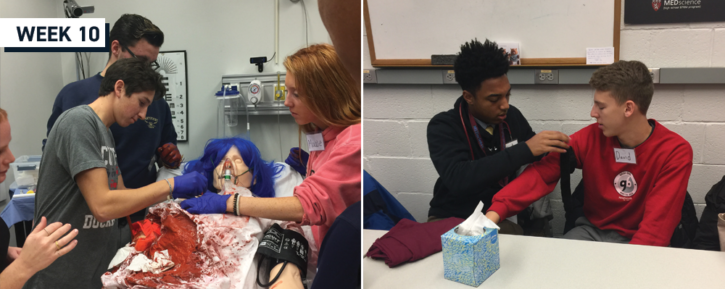
We had an amazing finale to our term with the HMS Medscience program: a trauma simulation. This scenario featured a patient suffering from serious soft tissue wounds and a lot of blood loss. Students practiced using tourniquets, interosseous blood delivery, and needle decompression treatment for tension pneumothorax. This all sparked a great discussion about trauma care in combat zones during wartime that was well-timed as we are all acutely aware and appreciative of our nation’s veterans today.
WEEK 9: November 3
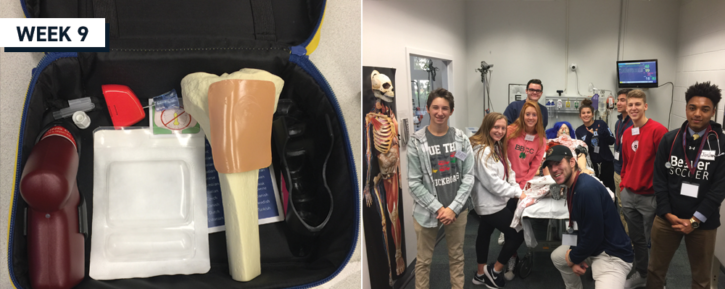
For the second to last week, we reviewed everything we have learned thus far and took a tour of the facility and equipment we used throughout the term.
WEEK 8: October 27
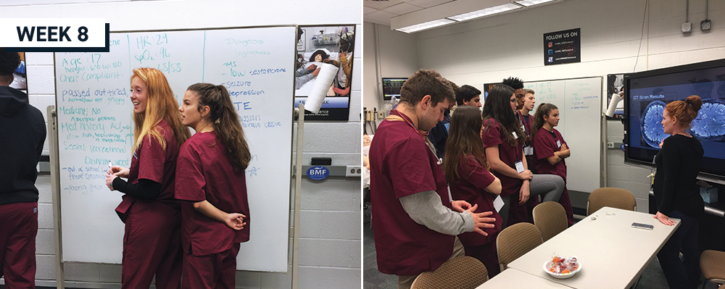
This week was our hardest case yet! Neurological cases can have very complex symptoms since the brain controls so many other things. To make matters worse, our patient was particularly uncooperative. Everyone did a great job piecing all of the information together.
Today I was surprised to learn how complex and confusing the nervous system can be. Looking back at one of the first simulations which seemed so hard at the time now feels so simple. I learned that the nervous system can result in lots of symptoms and when you think the problem could be only one system it really involves a lot more. This simulation was a lot more complex than the past simulations and was a lot longer. I feel as though we really used lots of our old skills to complete it. – Maddie Mullin ’18
WEEK 7: October 20
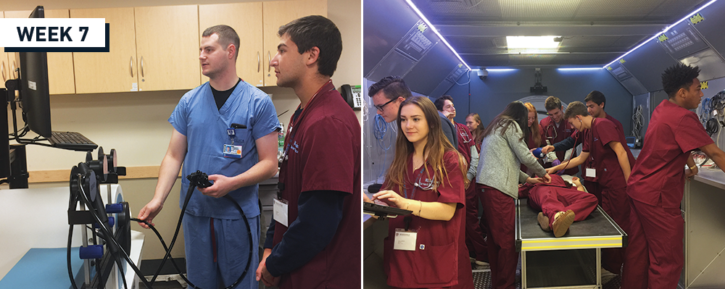
This week, we headed to the STRATUS Center for Medical Simulation at Brigham and Women’s Hospital. Highlights from our visit included practicing with surgical demos and touring the NASA simulation lab, which will be used to train astronauts to do surgeries in space.
One specific moment that stuck with me was when I was taught how to use the colonoscopy simulator by an actual physician. It was really cool how he took the time out of his day to teach me, and I truly learned how hard it is to be a doctor. Everything has to be absolutely perfect, and any imperfection with fine motor skills, which I lack, can result in major complications. I learned that while being a doctor might not be the best path for me, there are still other STEM-related careers that might be good fits for me. Time will tell to see what they are. – Drew Siegal ’18
WEEK 6: October 13
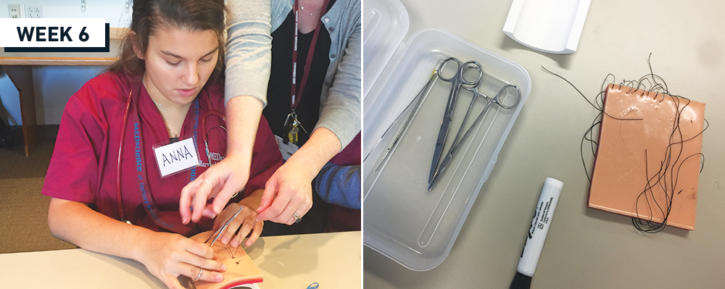
Suturing is a lot harder than we initially thought! We learned a few stitches from a surgeon and then practiced our own skills on skin models.
It was so fulfilling to be able to tie the knot correctly, and it took such heavy concentration to do it – and that’s not even doing it perfectly, which takes so much practice. After I finished the complicated running stitch, and it looked good, I was so proud of myself. I felt so good about my work and how I did. It was an unbelievable feeling. – Anna Kraft ’18
WEEK 5: October 6

We often don’t think of our endocrine glands, but they are super important – regulating your growth and development and controlling things like metabolism, growth rate, puberty, and menstrual cycles. In this week’s simulation, students were stumped by a confusing case of an unbalanced endocrine system.
With each week, we get better at working together and move faster. This week – without having an outline on the whiteboard – we were able to run through all of our background questions. As a group we spent less time caught up on diagnosis that didn’t fit the patient. Part of what made this case so interesting was that there were so many symptoms and side effects of the core issue that we had to weed through. It was kind of cool to see how one issue could throw so many other systems off-kilter.
– Clarissa Swanson ’18
WEEK 4: September 29
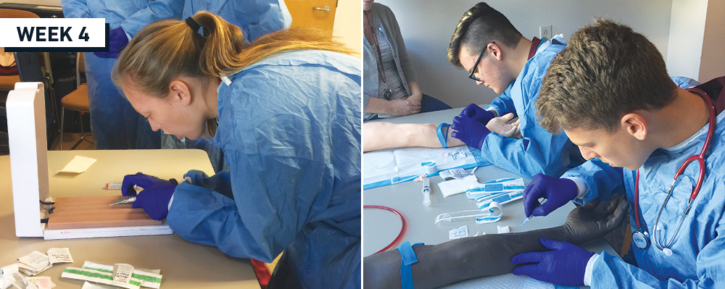
If you can handle a little blood, consider becoming a phlebotomist! In this simulation, students used needles, catheters, and syringes to place an IV and inject saline solution into a vein/arm model. Afterwards, many of the students said this was their favorite simulation because it was hands-on and skills-based.
WEEK 3: September 22

Oh no! Betty the mannequin has a problem with her heart! Students faced a challenging simulation with a patient presenting a confusing set of symptoms. Once again, our students worked as a team to diagnosis and save Betty.
Something that amazes me about the human body is how all of our systems automatically work together. For example, our heart is always beating in such a precise and intricate way even though we never think about it for even a second. – Jordan Idehen ’18
WEEK 2: September 15
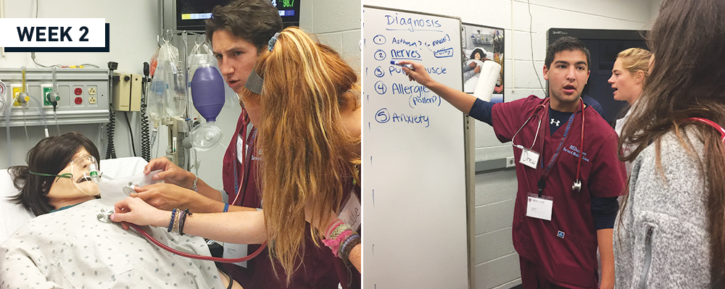
Building on last week’s intubation lesson, students responded to a respiratory simulation with a patient who was having difficulty breathing. They had to figure out a diagnosis and a treatment plan, and while we can’t give away the final diagnosis (the simulations are the same from term to term so we wouldn’t want to spoil it for future students!), we can tell you that by working together, the students were able to solve the case
With so many other ideas coming from my peers, I realized that being in the medical field requires patience and teamwork. Overall, this whole experience highlighted the fact that being a doctor is more than just having an understanding of the human body. Being a doctor requires a substantial amount of emotional intelligence, patience, and understanding, which is why the job can be so difficult and so rewarding. – Will Berlin ’18
WEEK 1: September 8

Students kicked off the Harvard Medical School MEDscience Program with an intubation lab. Intubation allows doctors to maintain an open airway while a patient is unconscious. Since brain cells can die after just four minutes without oxygen, this is very important. Whether used in the emergency room or during surgery, this is a life-saving technology.
This really showed me you must keep trying and seeing what you can accomplish. This simulation was really cool because I have read about these types of procedures and seen them on TV but actually doing it was a lot harder than I thought. I am amazed by the tools that we have to literally save someone’s life. – Maddie Mullin ’18